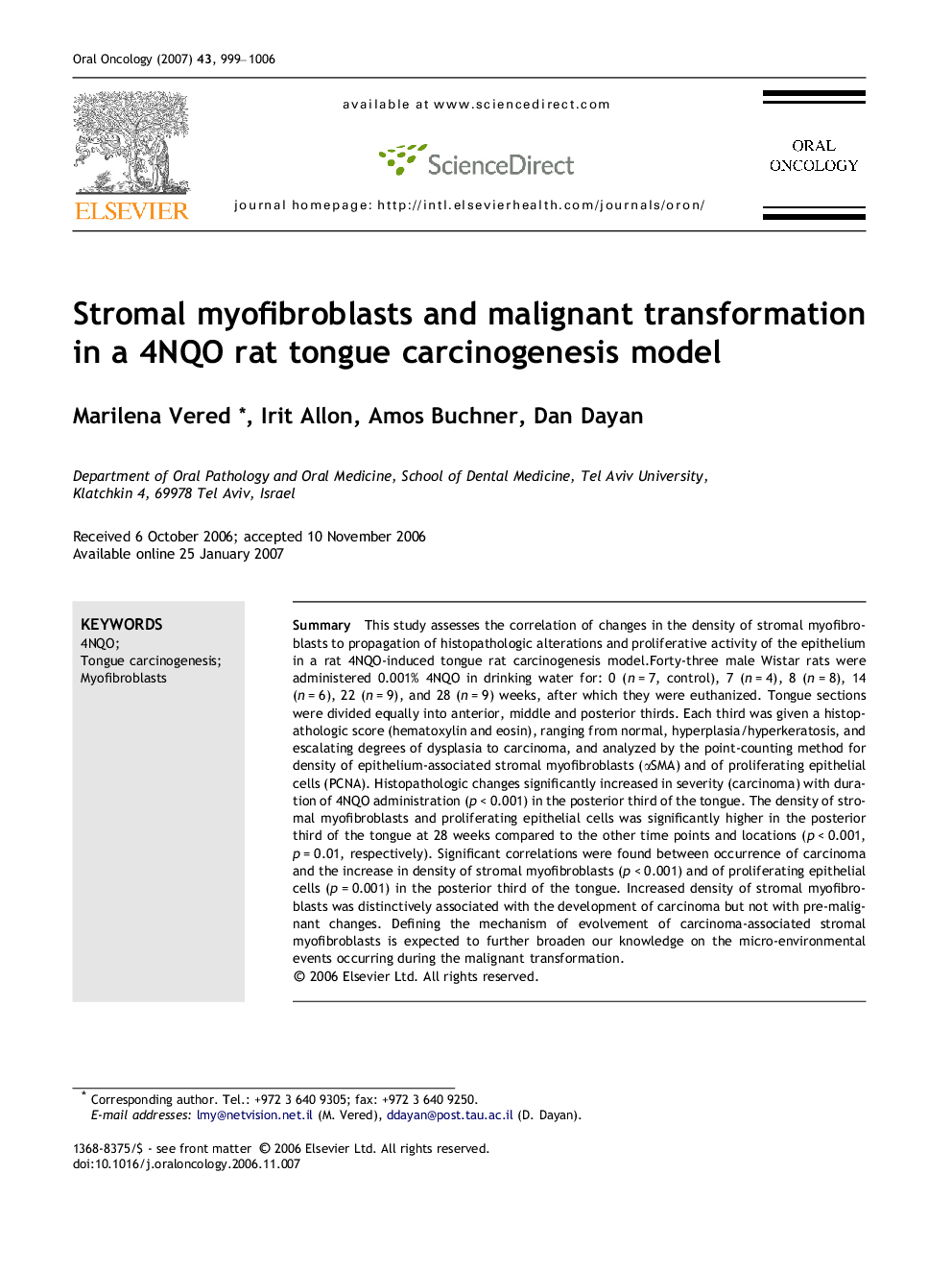| Article ID | Journal | Published Year | Pages | File Type |
|---|---|---|---|---|
| 3165694 | Oral Oncology | 2007 | 8 Pages |
SummaryThis study assesses the correlation of changes in the density of stromal myofibroblasts to propagation of histopathologic alterations and proliferative activity of the epithelium in a rat 4NQO-induced tongue rat carcinogenesis model.Forty-three male Wistar rats were administered 0.001% 4NQO in drinking water for: 0 (n = 7, control), 7 (n = 4), 8 (n = 8), 14 (n = 6), 22 (n = 9), and 28 (n = 9) weeks, after which they were euthanized. Tongue sections were divided equally into anterior, middle and posterior thirds. Each third was given a histopathologic score (hematoxylin and eosin), ranging from normal, hyperplasia/hyperkeratosis, and escalating degrees of dysplasia to carcinoma, and analyzed by the point-counting method for density of epithelium-associated stromal myofibroblasts (αSMA) and of proliferating epithelial cells (PCNA). Histopathologic changes significantly increased in severity (carcinoma) with duration of 4NQO administration (p < 0.001) in the posterior third of the tongue. The density of stromal myofibroblasts and proliferating epithelial cells was significantly higher in the posterior third of the tongue at 28 weeks compared to the other time points and locations (p < 0.001, p = 0.01, respectively). Significant correlations were found between occurrence of carcinoma and the increase in density of stromal myofibroblasts (p < 0.001) and of proliferating epithelial cells (p = 0.001) in the posterior third of the tongue. Increased density of stromal myofibroblasts was distinctively associated with the development of carcinoma but not with pre-malignant changes. Defining the mechanism of evolvement of carcinoma-associated stromal myofibroblasts is expected to further broaden our knowledge on the micro-environmental events occurring during the malignant transformation.
